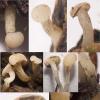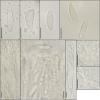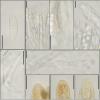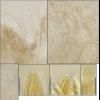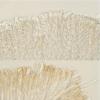
30-11-2025 12:53
 Edvin Johannesen
Edvin Johannesen
White short-stipitate apothecia found on thin twig

30-11-2025 10:47
 William Slosse
William Slosse
I recently found a collection of small Peziza sp.

27-11-2025 12:01
Thomas Læssøehttps://svampe.databasen.org/observations/10496727

27-11-2025 11:46
Thomas Læssøehttps://svampe.databasen.org/observations/10493918

17-09-2025 10:50
Heather MerryleesHi there!I am hoping for any advice on the identif

29-11-2025 08:40
 Andreas Millinger
Andreas Millinger
Hello,on a splintered part of a branch on the grou

28-11-2025 16:45
Nogueira HéctorNovember 23, 2025 Requejo de Sanabria (León) SPAI

25-11-2025 14:24
Thomas Læssøehttps://svampe.databasen.org/observations/10490522

27-11-2025 15:41
Thomas LæssøeSpores brownish, typically 4-celled; 26.8 x 2.4;

27-11-2025 11:31
Thomas LæssøeCollectors notes: Immersed ascomata, erumpent thro
Blackening ascomycet
Gernot Friebes,
06-01-2010 13:14
at New Year's Day I found this very strange ascomycet which I cannot determine. What a good start for this year...
It grew in the marginal area of a swamp on a rotten, very mossy tree stump. I am not even sure about the genus. The most striking characters are the blackening apothecia and the IKI- asci.
Here is the description:
Apothecia:
White, soon conspicuously blackening (whole fungus, especially the stipe and the stipe base) or turning dirty yellowish, 3-12 mm high, head 1-3.5 mm ø, head on the underside smooth or, when older, rugose. Stipe smooth or a bit hairy-rugose.
Spores:
irregularly elliptic, elliptic, often flattened on one side, partly deformed and with a smaller end, also comma-shaped or rhomboid, with 0-2(3) septa, occasionally germinating, sometimes with a visible nucleus, alive with hardly any content, 20-25 x 5-6(8) µm. Immature spores in asci nearly spherical!
Asci:
8 spored, clavate, biseriate, IKI-, Melzer's reagent-, KOH 5% + Melzer's reagent-; however, there is an apical apparatus, croziers+, (107)120-130 x (8)12-14 µm. Dead asci (observed in Melzer's reagent) have an up to 3 µm high dome.
Paraphyses:
filiform to slightly clavate, with strongly refractive, hyalin, multiguttulate content, in KOH 5% turning brownish. Up to 5(7) µm broad.
Textura:
the medulla is a textura intricata with 1.5-5 µm wide, often branched hyphae. The excipulum is a textura prismatica with 4.5-20 µm wide, often brown hyphae.
Best wishes,
Gernot
Gernot Friebes,
06-01-2010 13:19
Gernot Friebes,
06-01-2010 13:20
Gernot Friebes,
06-01-2010 13:20
Raúl Tena Lahoz,
06-01-2010 13:35

Re:Blackening ascomycet
Cudoniella acicularis?
Very good photos.
Happy New Year for all.
Raúl
Very good photos.
Happy New Year for all.
Raúl
Gernot Friebes,
06-01-2010 14:13
Re:Blackening ascomycet
Hi Raúl,
wow, I really should have known that species...sometimes I'm a bit slow :(
Thank you very much!
Best wishes,
Gernot
wow, I really should have known that species...sometimes I'm a bit slow :(
Thank you very much!
Best wishes,
Gernot
Hans-Otto Baral,
06-01-2010 15:43

Re:Blackening ascomycet
Hi Gernot
C. acicularis is often on Quercus but also on Fagus etc. Have you an idea about the substrate? Did you collect it in January? How is that possible? We have deep frost. The fungus is usually from Aug.-Nov., but I have one coll. from Jan. and one from March.
Zotto
C. acicularis is often on Quercus but also on Fagus etc. Have you an idea about the substrate? Did you collect it in January? How is that possible? We have deep frost. The fungus is usually from Aug.-Nov., but I have one coll. from Jan. and one from March.
Zotto
Gernot Friebes,
06-01-2010 16:41
Re:Blackening ascomycet
Hi Zotto,
there was neither Quercus nor Fagus, only Pinus, Betula, Salix and Alnus. There was hardly any wood left so I could not determine it in the field but I have some little pieces of the wood which I can try to examine under the microscope. I collected it on 1.1.2010. The weather was fine at this day, some degrees above zero and the snow was melting, so quite nice for ascomycetes.
Best wishes,
Gernot
there was neither Quercus nor Fagus, only Pinus, Betula, Salix and Alnus. There was hardly any wood left so I could not determine it in the field but I have some little pieces of the wood which I can try to examine under the microscope. I collected it on 1.1.2010. The weather was fine at this day, some degrees above zero and the snow was melting, so quite nice for ascomycetes.
Best wishes,
Gernot
